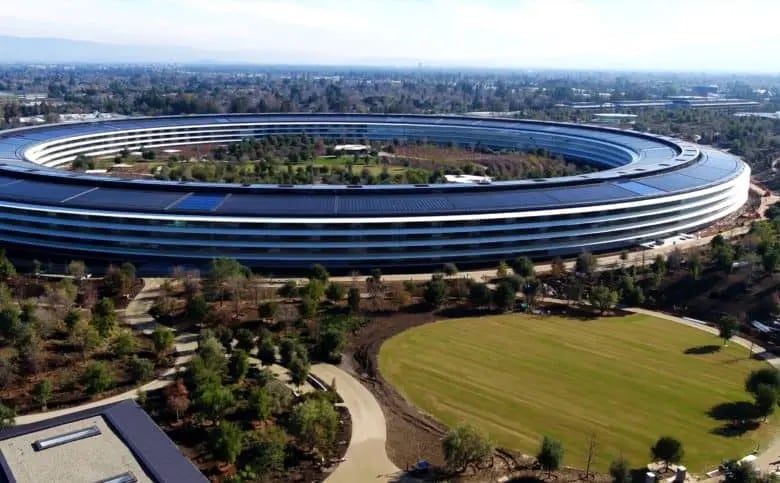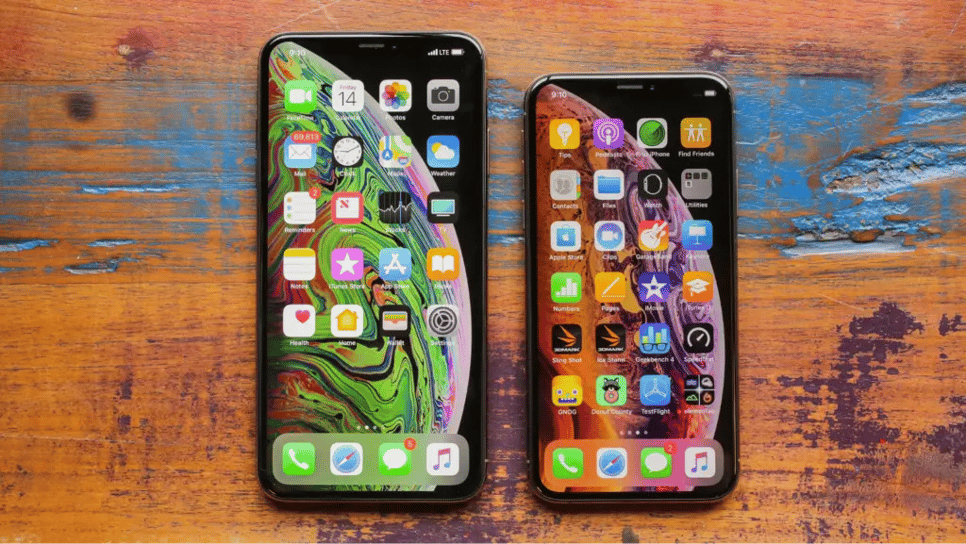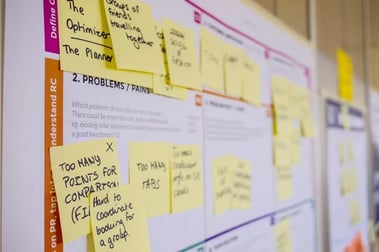When you think about innovation, chances are Apple is one of the first companies that comes to mind - and with good reason.
Led by the company’s late founding visionary Steve Jobs, Apple has broken every rule in the book and defied every expectation on its way to the top. In doing so, the tech titan has set trends in global technology for decades to come.
Even more amazingly, Apple still continues to churn out world-defining products on a regular basis, with most other tech outfits simply trying to keep up.
However, Apple is not all turtlenecks and keystone addresses. Beneath its shiny exterior, a strong culture of innovation and creativity help to drive Apple’s incredible performance.
Let's take a look at how Apple does it.
Steve Jobs: Genius, visionary, tyrant
Apple’s late founder Steve Jobs was a complicated guy: a visionary thinker, a genius innovator, and, by most accounts, a bit of a tyrant, too.
Just take a look at any one of the clips of Jobs getting feisty with his staff, and you can start to understand the energy and vision behind his relentless drive for success.
Interestingly, jobs seemed to embrace this reputation in a big way, as it helped him drive his people onward to produce so many world-changing innovations.
As tough as he may have been to work for, Jobs’s overwhelming focus on innovation set Apple on a course to define the personal electronics market for years. His tenacity and determination helped make the company such an incredible force for disruptive innovation.
We can see this commitment to innovation on display in Apple’s earliest product releases, such as the Macintosh in 1984, and the Powerbook in 1991. These products defined the modern computing experience for generations of users, shaping the world’s relationship with technology.

This string of incredible innovations extended well into the 1990s, including the introduction of the iMac in 1999, followed by the real moneymaker, the iPod, in 2001.
However, all of this was merely setting the stage for Apple’s defining innovation achievement: the groundbreaking rollout of the iPhone in mid-2007.
The iPhone: A masterclass in disruptive innovation
As noted in Wired magazine, the iPhone isn’t just the best-selling personal electronics product ever created - it’s also the most influential one, too.
Not only have the 1.5 billion iPhones sold helped change the way people live around the world, but they’ve also created an entirely new market of app developers. This has helped democratize the software scene, opening doors for a fresh wave of geeks to make their mark on the world.

As Wired puts it, the iPhone has ‘put the world in our pockets’, by offering users a camera, GPS device, music player, communicator, trip planner, and payment tool, all in one device.
And the iPhone hasn’t just defined the way people use personal electronics, either: it’s also set up an entirely new ecosystem of supply chains all over the world. The same manufacturers producing iPhones now also make the same parts for drones, wearable technology, self-driving cars, and smart home electronics.
So, how does Apple do it? What’s behind this incredible drive for innovation?
“Products and people” - Apple’s eight rules for innovation
A 2018 article by Fast Company lauded Apple as the world’s most innovative company, topping the magazine’s annual list of the top 50 innovators.
In an extended interview, Apple CEO Tim Cook lifted the hood on Apple’s innovation, explaining in detail how the company drives innovation with a relentless focus on improving the lives of people around the world.
Here are Apple’s eight rules for innovation.
1. Put people first
With a quarterly revenue of $58 billion and an incredible market valuation of over $1 trillion, Apple is most certainly a profitable enterprise.
However, Tim Cook says people shouldn’t get hung up on the numbers. Instead, Apple’s innovation approach focuses instead on making people’s lives better with smart and intuitive products.
This ‘people first’ approach is at the very heart of Apple’s innovation culture.
“We’re a group of people trying to change the world for the better,” says Cook. “That’s who we are. For us, the technology is a background thing. We develop products in such a way that we infuse humanity into them. We take our values very seriously, and we want to make sure all of our products reflect those values.”

Apple focuses on humanity first. Source: Inc
This constant focus on making things easier and more convenient for people is what drives Apple’s approach to innovation, and is why their products are so intuitive and easy to use.
For a great example of this ‘people first’ approach, look at the way the iPhone changed mobile phones forever. Now, with phone manufacturers trying to copy Apple’s seamless user interface, the days of complicated keypads and flip-phones seem like a distant memory.
2. Align corporate culture with innovation strategy
Since the days of Steve Jobs, Apple has worked hard to establish a corporate culture of innovation that deploys human resources to support the company’s strategic objectives.
By starting with its mission statement and designing its internal company structure and development systems accordingly, Apple benefits from a strong alignment between innovation strategy and corporate culture.
This degree of alignment between company culture and innovative thinking is a major factor determining business competitiveness in the information technology, online services, and consumer electronics industries. It’s what sets a company like Apple apart from its competitors.
As Tim Cook says, “Innovation is deeply embedded in Apple’s culture. We approach problems with boldness and ambition, and we believe there are no limits. Innovation is in the DNA of the company.”
If you’re trying to boost your business’s capacity for innovation, consider the degree of alignment between your corporate culture and your innovation strategy. If you find blockages in your problem solving or product development systems, look for ways to address these.
3. Hire smart people, then empower them
We all know innovation is about having the right people. For a lot of companies, this means having a rigorous employee selection process focused on pairing skills, expertise, and talent with a defined task or set of responsibilities.
However, a lot of companies fail to utilize the full potential of their most talented hires.
This is where a little advice from Steve Jobs can come in handy. “It doesn’t make sense to hire smart people and tell them what to do,” said Jobs. “We hire smart people so they can tell us what to do.”

There’s so much wisdom packed into these simple words. Smart and talented people have the potential to bring a fresh perspective to bear on outstanding problems, and can find entirely new solutions that existing employees might have overlooked.
Empowering smart people isn’t just good for the company, either. It’s also great for employee engagement and motivation, and helps people contribute their best thinking.
So, don’t just hire talented people and put them in a box. Instead, put them firmly in the driver’s seat, and invite them to suggest better ways of doing things.
4. Balance structure and flexibility
For Apple, churning out great innovations is a question of balancing structure and flexibility.
On the one hand, a large company like Apple needs to work to fixed deadlines, and needs a degree of stability and predictability when it comes to developing new products and services.
On the other hand, innovation requires flexibility. If employees aren’t given the freedom to consider fresh approaches to complex problems, they’re less likely to dream up the next world-changing idea.
Unfortunately, rolling out new products can be a rigid and unforgiving process. “A product is like a train,” says Cook. “The train leaves the station, and if you have a great idea after that, it’s going on the next train. You’re not going to call this one back to the station.”
However, says Cook, it’s also important to build in some flexibility in your processes. “Right up until the last minute, you want to continue to use the product and discover more things that you want to do. There has to be a balance.”
5. Take the time to get things right
For fans and customers, Apple might seem to churn out innovation after innovation, year after year. In fact, their products have a long and considered development period.
This steady-as-she-goes development process helps reduce the risk of products misfiring, and limits the possibility of any embarrassing missteps.
As Cook says, “We start projects years before they come out. You could take every one of our products - the iPod, the iPhone, the iPad, the Apple Watch - they weren’t the first, but they were the first modern one.”

“In each case, we started long before other people did, but we took our time to get it right. That’s because we don’t believe in using our customers as a laboratory. What we have that I think is unique is patience. We have the patience to wait until something is great before we ship it.”
This patience and effort is precisely how Apple has built such a strong reputation amongst its users, and is why its customers place such a high degree of trust in Apple products.
And speaking of Apple’s customers...
6. Remember, customers are jewels
Even for an innovation giant like Apple, it’s important to pay attention to what customers want, and what they’re saying about the products and services they’re using on a day-to-day basis.
“Customers are jewels,” says Cook. “Every day I read a fair number of customer comments. It’s sort of like checking out blood pressure. I care deeply about what our users think.”
For businesses of all shapes and sizes, it’s heartening to see how much attention a market leader like Apple pays to something as simple as customer reviews. For Apple, these are a great way to inform future product development, and to iron out any technical issues.
7. Look past crowd thinking - and tune out the noise
Given Apple’s market dominance now, it’s easy to forget that it hasn’t all been smooth sailing. A lot of Apple products have been met with criticism or hangups, but have gone on to defy expectations and perform incredibly well.
For example, at the launch of the iPhone, a lot of people said the product would never take off because it didn’t have a physical keyboard. Customers were used to being able to type on actual keys, and naysayers even claimed the iPhone would be an embarrassment for Apple.
1.5 billion sales later, it’s easy to see who was on the right side of history.
The key to churning out great products, year after year? Listening to customer feedback, while also tuning out unhelpful noise.
8. Have the courage to say no to great ideas
No matter how Apple gets, or how huge the new Apple Park complex in Cupertino might be, the company can’t do everything.

It’s tough, but even Apple needs to say no to great ideas on occasion.
If the company threw its weight behind every great idea proposed by its designers and engineers, it would risk spreading its resources far too thin. Instead, Apple has the courage to say no to some great ideas every once in a while.
While this may sound counter-intuitive, it reflects the reality of modern innovation. For most companies, the main innovation challenge isn’t a lack of ideas. Instead, it’s more common for companies to have too many ideas to evaluate and prioritize effectively.
For growing businesses, having the courage to say no to some promising ideas can make all the difference to your survival over time.
Is Apple as innovative as it used to be?
Despite the company’s consistently strong performance, every once in a while, someone will come along and assert that Apple simply isn’t the same anymore.
It’s easy to see why some of the air might have leaked out of the Apple balloon. After all, for every exciting innovation like the AirPod, Apple has had its share of products that failed to truly take off, like the Apple Watch and the iPhone XS.

This poses a unique problem for a tech company: has Apple created so many great and long-lasting products that the market for new gadgets has started to shrink?
With iPhone sales looking a little shaky, more people seem to be holding on to their older versions. Some market commentators are even starting to sound alarm bells for Apple, and are predicting that the company may have reached the end of its innovation capacity.
However, given the company’s strong history of defying expectations and delighting customers and fans around the world, we’re certain Apple has plenty of surprises in store for us.
Take your cue from Apple
As we’ve seen from Apple’s example, world-changing innovation takes vision, courage, and discipline.
It also helps to have a strong innovation strategy in place, and to look to the greats for pointers.
You don’t need to be Steve Jobs or Tim Cook to make these ideas work for you. No matter which industry you’re in, you can always pick up some helpful new strategies and techniques to help you along in your innovation journey.



